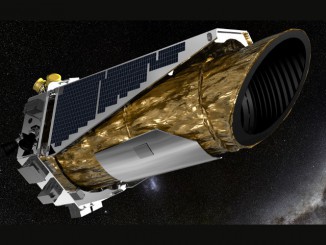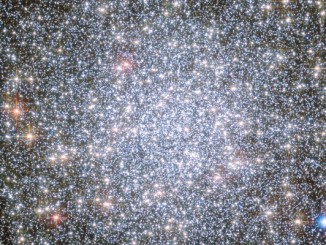
Gaia, the space probe that has been mapping a billion stars in the Galaxy following its launch by the European Space Agency (ESA) in December 2013, has revealed its first revolutionary data charting the position and brightness on the sky of one billion, 142 million stars, as well as calculating the distances and motions of two million stars. Add in 3,194 variable stars and precise distance measurements to 14 open star clusters, and Gaia’s first data release covering the opening 14 months of its five-year mission has surpassed all expectations.
This initial release of data from the mission “gives us a first impression of the extraordinary data that await us and that will revolutionise our understanding of how stars are distributed and move across our Galaxy,” says Alvaro Giménez, the Director of Science at ESA.
Gaia’s ultimate aim is to measure the positions, distances and motions of over a billion stars – about one percent of all the stars in the Galaxy – to unprecedented accuracy, but this preliminary release of data is already the most detailed three-dimensional map of the Milky Way ever produced, with the resolution from its 1.5 gigapixel camera something that the Hubble Space Telescope would be proud of. Gaia mapped not only the distribution of stars in the Milky Way and how those stars form the structure of our Galaxy, but also the neighbouring Small and Large Magellanic Clouds.
The initial map features criss-crossing stripes that look as though the map were woven together; these are artefacts resulting from the way Gaia scans the sky and, as more data is gradually collected, the stripy pattern will transform into a smoother map.
On its own, Gaia hasn’t been observing long enough to calculate distances and motions of stars. However, Gaia isn’t the first mission to do what it’s doing. In 1989 ESA launched the Hipparcos spacecraft, which measured the distances to 118,200 stars in high-precision and a further 2.5 million stars with less precision, forming the Hipparcos and Tycho star catalogues respectively. By combining these catalogues with Gaia’s data, we now know the motions and distances to over two million stars with unprecedented accuracy, forming the new Tycho–Gaia Astrometric Solution (TGAS) catalogue. Over the coming years, as more data is collected, the TGAS catalogue will eventually be superseded by an all-new Gaia catalogue.
One of the biggest developments of Gaia’s preliminary release has been for open star clusters, which are gravitationally-bound groups of hundreds or thousands of young stars that formed together. Determining their distances has always been problematic – Hipparcos, for example, only had the ability to map the nearest open cluster, which is the Hyades cluster in the constellation Taurus, in three dimensions, and to measure distances to 80 more open clusters up to 1,600 light years away. Knowing the precise distance to open clusters allows astronomers to better judge the true luminosity of the young stars in the clusters and, based on their luminosity, fit them to models of how young stars grow and evolve. Already, Gaia has found that some stars on the fringes of the closest 14 open clusters are located surprisingly far from the centres of the clusters. This has been interpreted as the member stars of the clusters beginning to disperse into the Galaxy at large, as though the clusters were fraying on their edges.
Another success story has been the search for variable stars. Gaia has so far identified 3,194 variables, including 386 new discoveries, among them a significant population in the Large Magellanic Cloud. Certain types of variable star, such as Cepheids and RR Lyrae stars, are useful for measuring distances because of a period-luminosity relation that they share, and Gaia’s measurements will help calibrate this relation to make measuring distances to similar stars in other galaxies much more accurate.
It hasn’t all been plain-sailing for the mission. “Gaia encountered a number of technical challenges and it has taken an extensive collaborative effort to learn how to deal with them,” says Gaia’s mission manager, Fred Jansen. Among these challenges were an inefficient sun-shield, frozen mirrors and more thermal expansion in the spacecraft’s hull and optics than anticipated, but solutions were found and the systematic errors that they caused accounted for, allowing this first release of data, albeit nine months later than intended.
The data from Gaia’s first release can be accessed at http://archives.esac.esa.int/gaia



